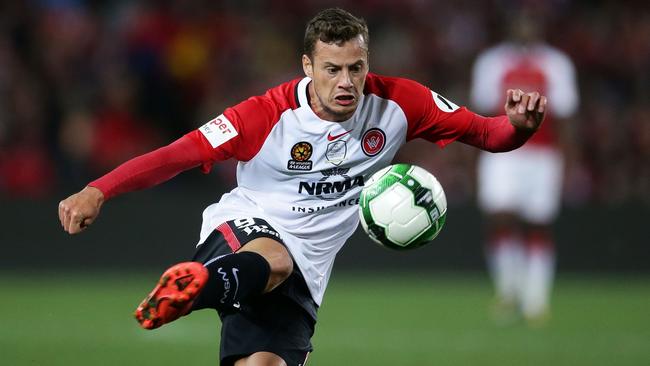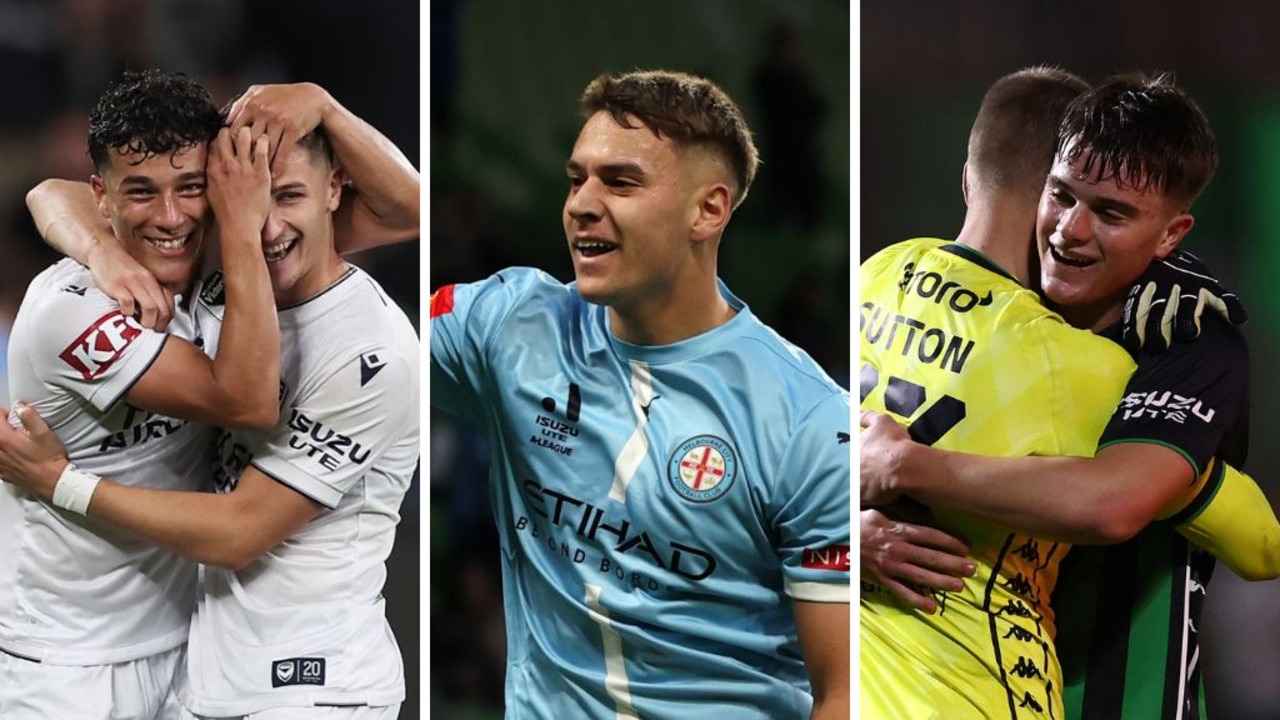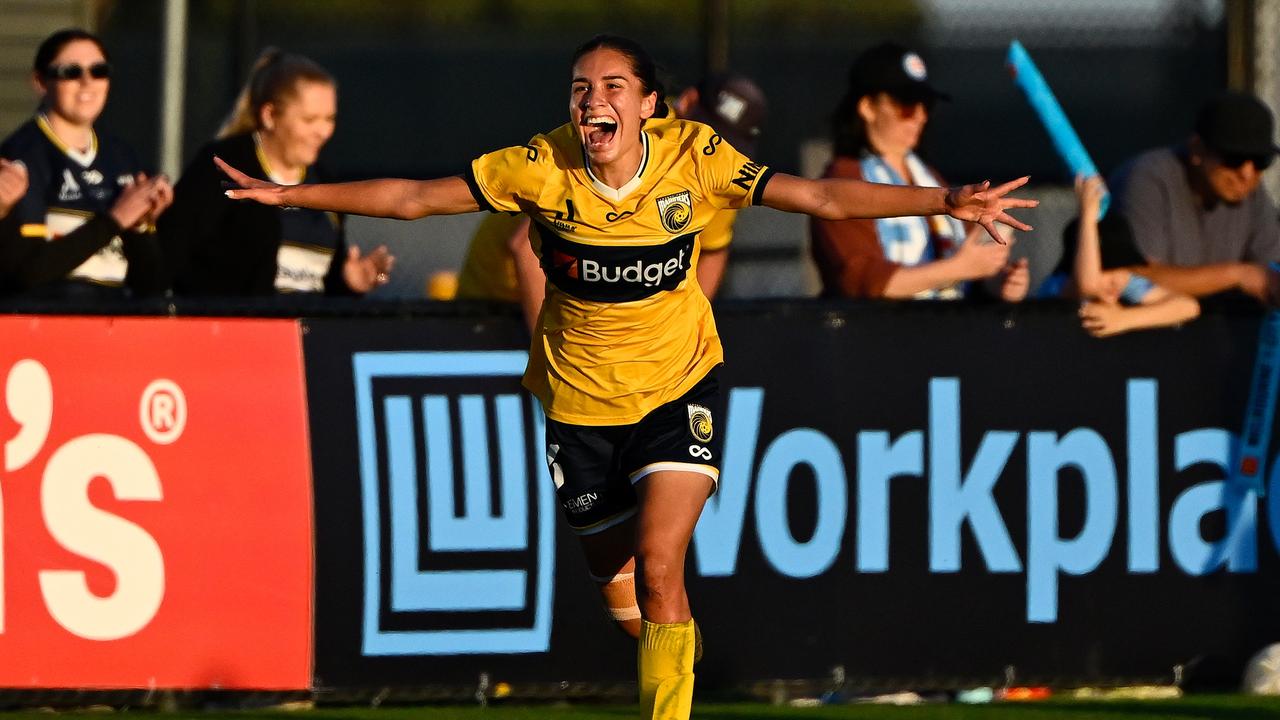A-League’s foreign legion killing off Australia’s striker stocks
As Tim Cahill departed, Australia was left to contemplate just how we will find someone to fill his big boots.

As Tim Cahill disappeared up the ANZ Stadium tunnel for the last time in the early hours of Wednesday morning, Australian soccer was left to contemplate just how it will find someone to fill his big boots.
Replacing the Socceroos greatest goalscorer — he notched 50 in a wonderful international career — is not going to be easy as we have discovered in recent times. Australia’s failure to score a goal from open play at the World Cup in Russia earlier this year was instructive.
With Cahill running out of legs, the toothless attack was evident long before the World Cup. Long gone are the days of champion No 9s such as John Kosmina, Mark Viduka, John Aloisi and Graham Arnold.
While Australian soccer doesn’t have concerns when it comes to areas such as goalkeepers, midfielders and wide attackers, finding a true out and out striker is a different kettle of fish.
Ange Postecoglou searched far and wide and now Graham Arnold has been forced to do the same while, at the same time, trying to adapt by using an attacking formation with three number 9s that has been employed by a number of high-profile clubs in Europe.
It was partly successful against Lebanon in the 3-0 win on Tuesday’s night with Scottish born winger Martin Boyle grabbing a double and setting up the third for Mathew Leckie.
But it is not an ideal situation as we are left to ponder when will we produce our next true striker.
Unfortunately, it is a tough road in Australia for aspiring local strikers, especially in the A-League where clubs are not willing to invest time or money into developing them. Instead, they spend the big dollars on foreign attackers.
Just about every club in the competition has a foreigner as their No 9 — Ola Toivonen (Melbourne Victory), Adam le Fondre (Sydney FC), Bruno Fornaroli (Melbourne City) and Oriol Riera (Western Sydney) come to mind.
It has been the case since the A-League started in 2005.
Luke Casserly, Football Federation Australia’s head of national teams performance, believes the production line of young players is there but they suffer from lack of opportunity.
“We have a 10-team A-League and each of those clubs has five foreigners, so you can have the best production line but where do these players go?” Casserly correctly pointed out.
“You know, 25 years ago there were 16 teams in the National Soccer League and 28 National Youth League teams across the northern and southern division. That meant 44 senior teams after the age of 16.
“And don’t forget, we have had great growth in population and kids playing the game, yet there are less chances for these players than 25 years ago.”
One obvious solution would be to reduce the number of foreigners in the A-League, but at what cost to the standard of the league and how do you legislate against clubs signing certain positional players such as strikers?
Former Socceroo Peter Katholos believes the heart of the issue goes to the lack of proper coaching of young strikers.
“(Club) coaches must refine young talent and not expect ready-made strikers,” Katholos said. “Your mission as a coach is to produce players and results but too many only want results for their resume.
“I would like to see former strikers that excelled to coach these kids, like Ztatko Nastevski, Pablo Cardozo, Frank Farina, Marshall Soper, Con Boutsianis, Abbas Saad and John Kosmina.”
He agrees, however, that there is no use spending all that time and energy on the talent if the clubs prefer to look overseas for strikers.
One former Socceroo, he did not want to be named, believes the playing system is an issue that prevents the development of Australian strikers.
“From the age of 13 we play 4-3-3 with only one striker. If you play 4-4-2 or 3-5-2 you have double the number of strikers playing and training,” he said. “We are producing plenty of midfielders but not so many no 9s.”
Developing strikers is going to be a long, hard haul in the present climate because the kids cannot see a future here and are more likely to go overseas to try their luck and get a better opportunity.
However, in the short term, the expansion of the A-League from 10 to 12 teams for next season is a key and a further two the season after would open up the opportunities. It will add something like another 92 playing spots.
The introduction of a second-tier national competition (with promotion and relegation) is also seen as a major stepping stone. A 14-team competition with restrictions on the number of foreign imports would provide a perfect platform for development.



To join the conversation, please log in. Don't have an account? Register
Join the conversation, you are commenting as Logout